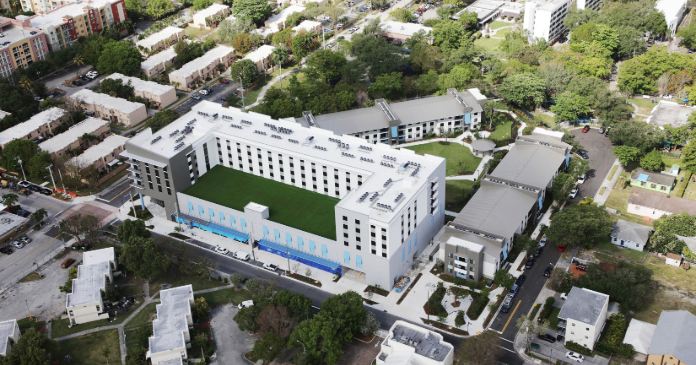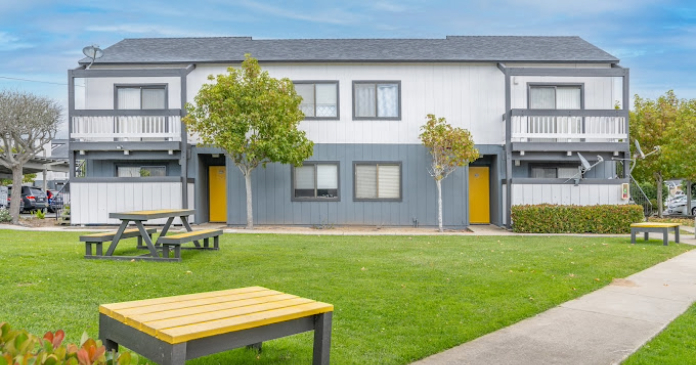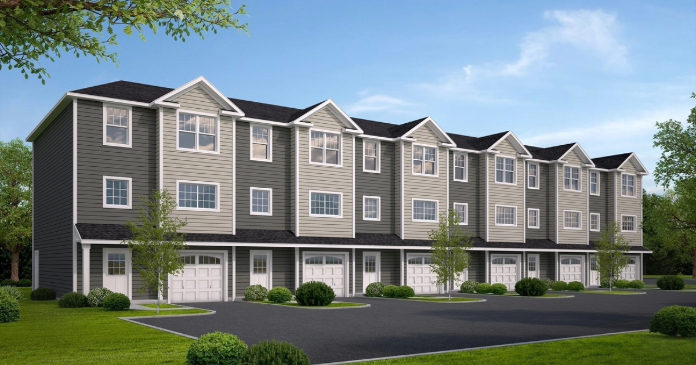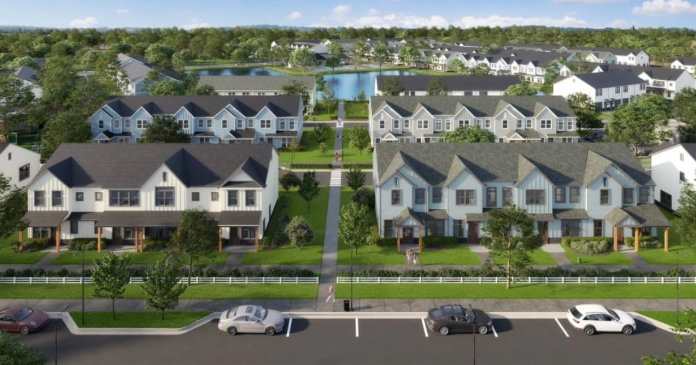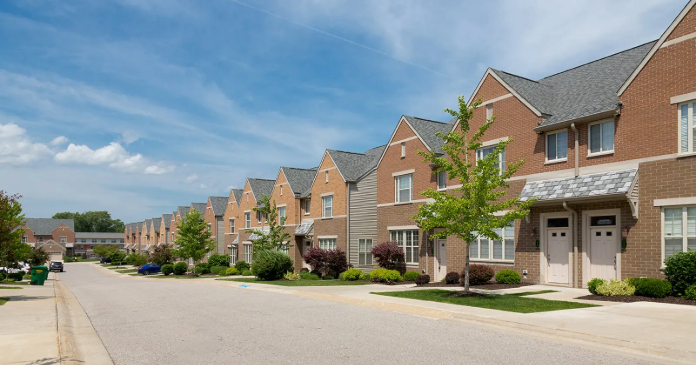The American family has undergone significant change in recent decades. There is no longer one predominant family form, and Americans are experiencing family life in increasingly diverse ways.
In 1970, 67 percent of Americans ages 25 to 49 were living with their spouse and one or more children younger than 18.
Over the past five decades, that share has dropped to 37 percent.
With the drop in the share of adults living with a spouse and children, there has been an increase in other types of family living arrangements, like unmarried adults raising children.

A recent survey finds that the U.S. public is more accepting of some family types than others. And, broadly speaking, Americans are more pessimistic than optimistic about the future of the institution of marriage and the family. What’s behind the change in family structure?
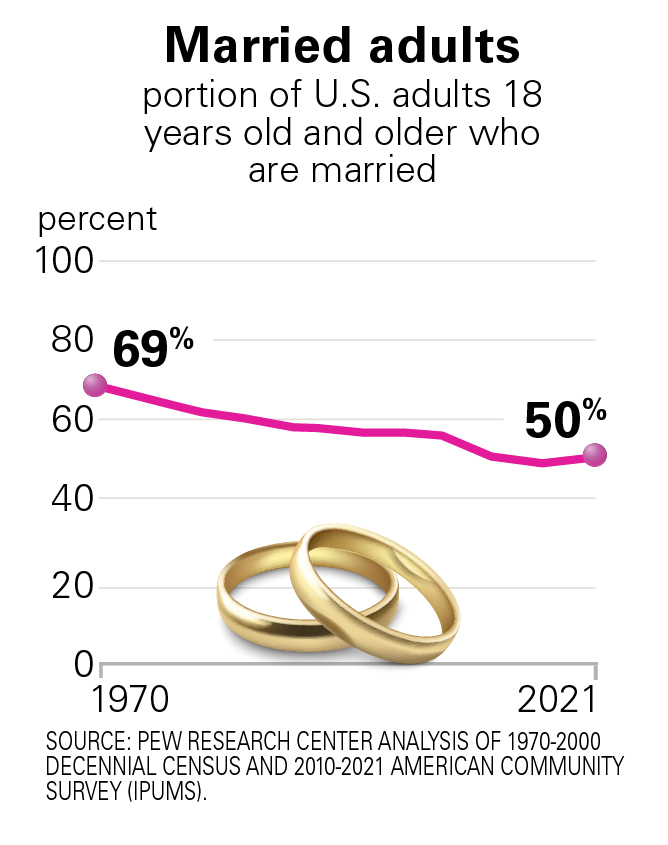 There are several factors that have contributed to these changes. Americans are marrying later in life, and a rising share have never been married.
There are several factors that have contributed to these changes. Americans are marrying later in life, and a rising share have never been married.
While the overall share of married adults has declined, certain types of marriages have become more common over time. Since the 1970s, a growing share of Americans are in interracial or interethnic marriages.
Intermarried refers to marriages between a Hispanic and a non-Hispanic spouse, or marriages between non-Hispanic spouses who come from different racial groups.
In 2015, same-sex marriages became legal nationally, and since then there has also been an increase in the proportion of Americans in same-sex marriages. In 2021, there were over 700,000 same sex married couples in the U.S., accounting for approximately 1 percent of all married couples.
Changes in fertility patterns have also had a significant impact on family dynamics. Compared with their counterparts in the 1970s, women today have fewer children.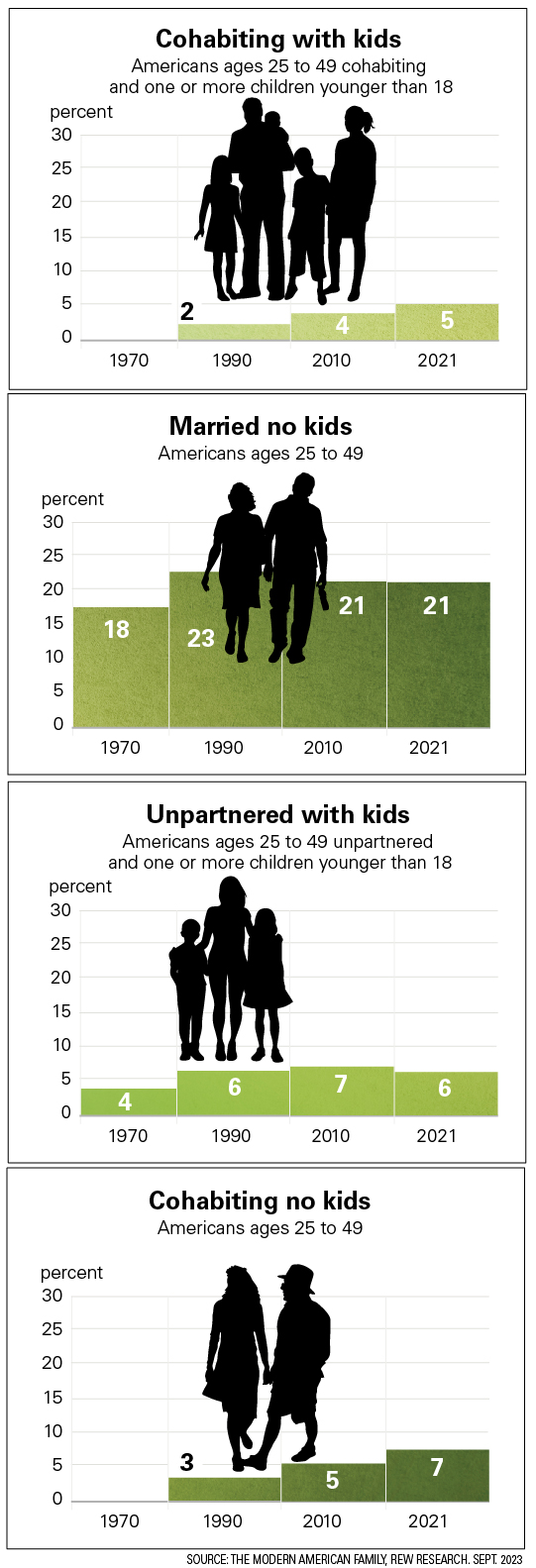
The relationship between marriage and parenthood has also shifted, as more women are having children without being married.
Taken together, these changes help explain why married couples raising children together is no longer the norm.
Let’s take a closer look at the changes in family life over the past decades to understand how the American family has evolved and what it looks like today:
What form a family takes is increasingly shaped by educational attainment and varies significantly across racial and ethnic groups.
Today, individuals with a bachelor’s degree are much more likely to be married than those with less education—a change from the 1970s, when adults with a high school diploma were as likely as college graduates to be married.
There are also growing racial and ethnic disparities since that time, with Asian and white adults increasingly more likely to be married than those who are black or Hispanic.
Source Pew Research







